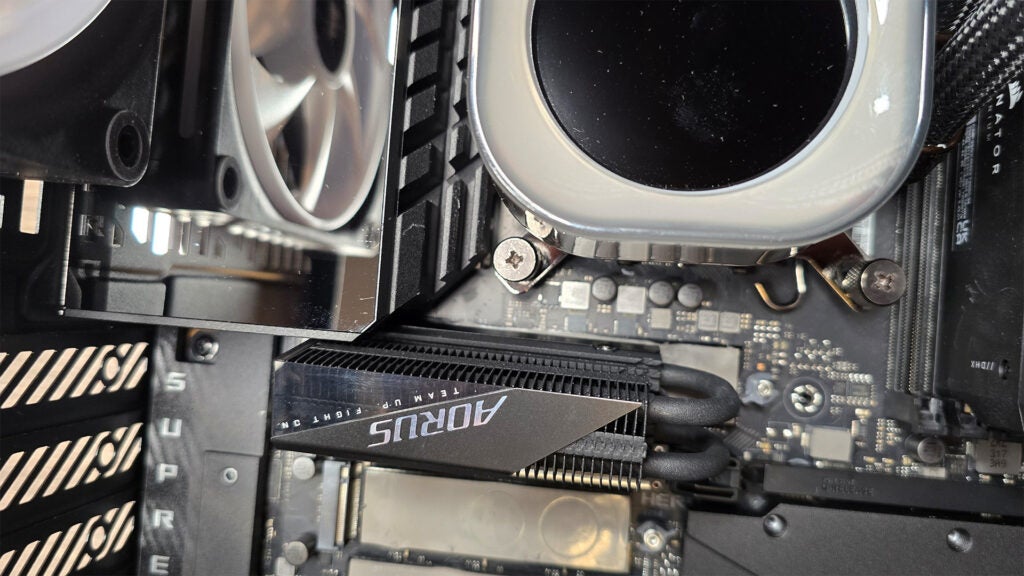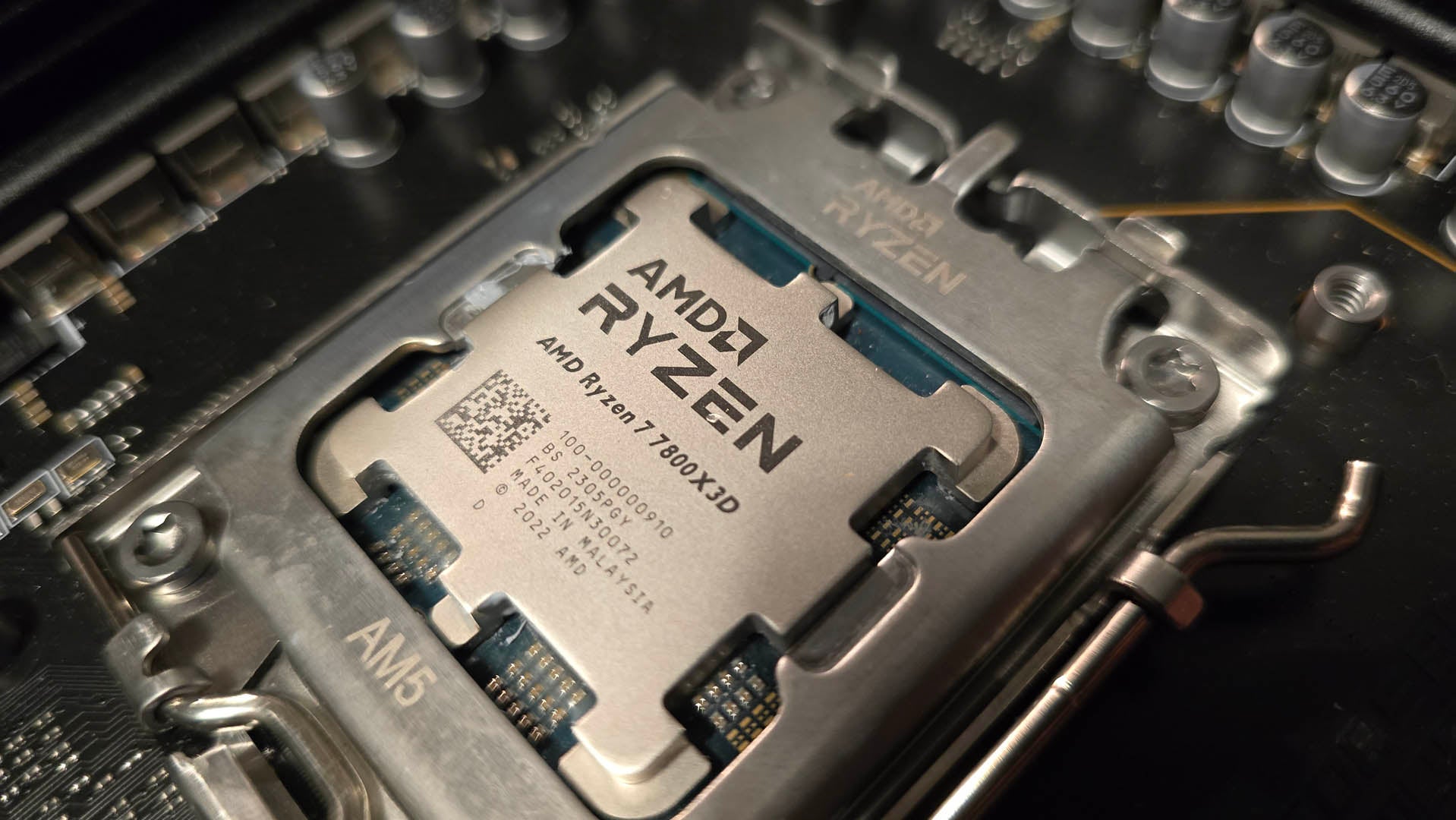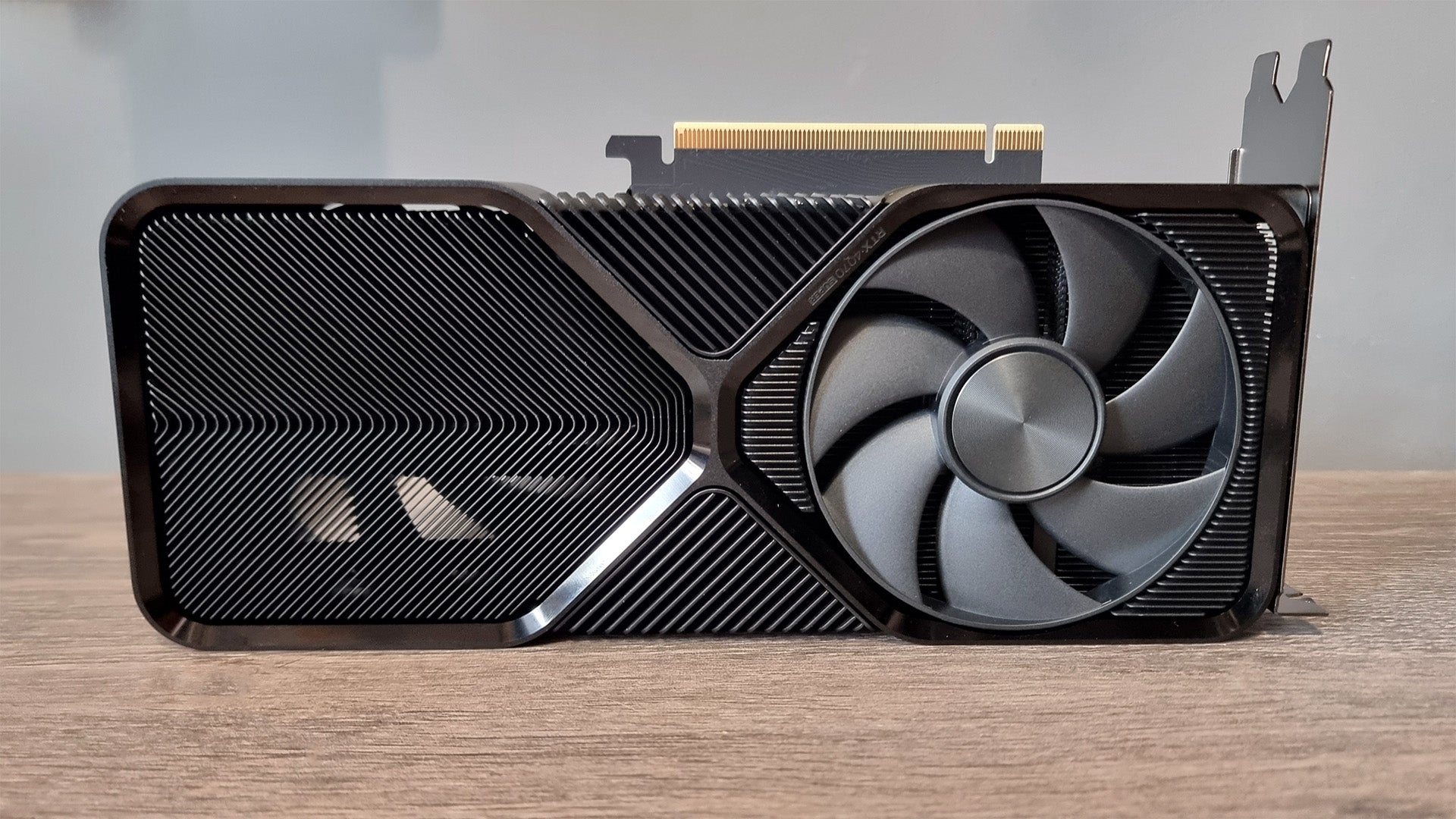Gigabyte Aorus Gen5 12000 Review
Impressive PCIe 5.0 performance




Verdict
The Gigabyte Aorus Gen5 12000 is nothing short of awe-inspiring when it comes to pure grunt and sequential performance. Clocking in at well over 12GB/s for sequential read is easy for this thing. Combine that with solid all-round performance, an immensely potent heatsink, and a surprising price tag for the capacity, and what you’re left with is an astoundingly good value drive, at the cutting edge of modern PCIe standards.
Pros
- Ridiculously quick in sequential file transfer tasks
- Large DRAM cache, allows for rapid in-game loading
- Solid heatsink, minimizes PCIe 5.0 heat woes
Cons
- Heatsink isn’t compatible with all motherboards
- Random 4K performance not the best
Key Features
- Fast and modern interfaceGigabyte’s Aorus Gen5 12000 takes advantage of the PCIe 5.0 interface, making it significantly faster than its PCIe 4.0 predecessors.
- Plenty of RAMA big chunky 4GB of LPDDR4 cache allows it to rapidly load games and transfer files.
- Phison E26 ControllerGigabyte’s combined 232-layer TLC NAND with Phison’s latest and greatest E26 controller, to leverage some blistering performance numbers.
Introduction
The Gigabyte Aorus Gen5 12000 M.2 PCIe 5.0 SSD is the company’s second iteration of its PCIe 5.0 drive line. Initially when the standard first made its debut, back in early 2023, a number of manufacturers, including Gigabyte launched their PCIe 5.0 drives into the market, most of which took advantage of Phison’s stock heatsink. Gigabyte was one of the few that didn’t.
For those that don’t know, PCIe 5.0, not only doubles the maximum bandwidth available for sequential performance comparatively to PCIe 4.0, but it also generates a significant amount of heat as it does so. To dissipate that, Phison recommended active heatsinks as standard (ones incorporating tiny fans) and on launch, the vast majority of manufacturers used the stock cooler in their M.2 designs.
Gigabyte was an exception to that rule and instead launched with this rather impressive, and somewhat iconic chunky heatsink that we see here, with the one big advantage being that it remained cool, without adding a noise-generating tiny fan into your build.
Fast forward a few quarters, and as the technology has matured, we’re starting to see drives finally break that 10 GB/s limit that the first drives debuted with. Gigabyte’s Aorus Gen5 12000 then, succeeds its 10000 sibling and represents one of the fastest drives out there right now.
Specs
- Utilizes the latest Phison controller
- Large DDR4 DRAM cache
- Seriously advanced 3D NAND
What’s quite surprising, however, is, at least, on the surface, there’s not a whole lot different between the Gen5 12000 and the 10000. Both featured the Phison E26 controller, both still utilize Micron’s latest 232-Layer TLC 3D NAND, and both feature an LPDDR4 DRAM cache on board. In fact dig deeper, and even the TBW endurance figures are the same across the two drives.
No, in fact, the majority of the performance seems to be coming from tweaked firmware, and potentially a larger DRAM cache on the SSD itself (although we’re still waiting to hear back from Gigabyte on confirmation on that one) compared to the 10000.
Hardware comparisons aside, the big showpiece is that chunky heatsink. Gigabyte’s calling this thing its M.2 Thermal Guard XTREME. It features twin heat pipes and is paired with an aluminum baseplate, and thermal pads on either side of the housing as well. Better than that, it’s also removable via the four small philips screws located on either side of the housing, so if you do pick up a heatsink variant, and want to instead install it underneath your motherboard’s integrated heatsink (because let’s be clear, some of the best motherboards out there, have pretty solid heatsinks as standard), then you can do that with ease too.
One minor caveat I will say however, is that thanks to that chunky heatsink, I did have trouble installing it in our test-bed motherboard, the Asus ROG Z790 Dark Hero, due to the top PCIe 5.0 slot being in such close proximity to the rear I/O cover. So do bear that in mind.
Test Setup
Along with a huge number of its competitors, I’ve put Gigabyte’s Aorus Gen5 12000 through its paces in a number of different synthetic and real-world scenarios, testing it over the course of a few weeks, with and without an OS installed on it.
This gives us a fantastic all-around analysis of how it performs generally outside of the advertising stats.
To ensure we’re getting consistent results, I’ve ensured we have a solid and stable test bed throughout the testing procedure. You can find my full test bed below:
- CPU: Intel Core i7-14700K
- Motherboard: ASUS ROG Maximus Z790 Dark Hero
- GPU: Gigabyte GeForce RTX 4080 16GB Aero OC
- RAM: 32GB (2x16GB) Corsair Dominator Titanium DDR5 @ 7200
- Cooler: Corsair iCUE Link H150i LCD Liquid CPU Cooler
- PSU: 1200W Corsair RMx Shift 80+ Gold PSU
- Case: Hyte Y70 Touch
As for the tests themselves, I’ve ran a mixture of synthetic and real-world tests. CrystalDiskMark 8 is our default go-to for synthetic performance. This gives us a good indicator on Sequential and Random 4K speeds under load. I’ve kept the queue depth and thread counts, stock (sequential at Q8 T1 / Q1 T1, and Random 4K at Q32 / T1 / Q1 T1), so if you do want to test your own drives at home for comparison it’s super easy to do so.

On top of that, we’re using Final Fantasy XIV’s benchmark test at 4K on Maximum settings as well, as this gives us a nice average load time result for each drive. I’ve also incorporated PC Mark 10’s Quick System Drive benchmark, and Data Drive benchmark, and finally, a raw 120GB real-world file copy test too. The latter of which involves copying Red Dead Redemption II onto the drive in question, then copying it onto the drive a second time, and then timing that to secure the final result.
I’m also utilizing a number of price-to-performance index metrics. These are calculated based on the drive’s performance or capacity in a certain field, divided by the current USD retail price at time of review, giving us a good idea of how much of a value proposition it represents.
Performance
As you’d probably expect with Gigabyte’s Aorus Gen5 12000, this thing rips when it comes to sequential file transfers. CrystalDisk Mark reported 12,328 MB/s read and 11,497 MB/s write speeds, and the 120GB File Copy test, finished in just 37.4 seconds, faster than any drive we’ve tested to date, including the PCIe 5.0 Seagate FireCuda 540, and the Crucial T700.
Random 4K performance however was somewhat lower than expected, with queue depth 32, reporting just 805 MB/s read and 592 MB/s write. Switch that to a Queue depth of 1 however, and it once again beats the majority of SSDs out there to the punch.
As for the pricing indices the 2TB Gigabyte Aorus Gen5 12000 does admirably here too, being relatively middle of the pack in terms of gigabyte per $, clocking in an 8.334 GB per $, sequential landed it in the top four, with it only being beaten by the P5 Plus, Adata Legend 960 Max, and WD Blue SN580 respectively, all of which are far slower PCIe 4.0 drives anyway.
Latest deals
Should you buy it?
If you want one of the quickest drives out there today
The Gigabyte Aorus Gen5 12000 is an incredibly speedy drive, with 12GB/s sequential reads easily achievable, it’s phenomenally fast, at least until the next generation of PCIe 5.0 drives land. It also comes with a stellar heatsink, if your motherboard doesn’t have a decent solution for that, it’s a fantastic solution. At least, if you can find it in stock.
You’re after the best deal possible
PCIe 5.0 drives are still expensive at time of writing and the Gigabyte Aorus Gen5 12000 is no exception. The standard hasn’t got a huge amount of competition currently for the controller, plus the additional heat has created some engineering challenges that have made these drives significantly more expensive than their PCIe 4.0 counterparts.
Final Thoughts
Gigabyte’s Aorus Gen5 12000 is an insanely rapid PCIe SSD, and has topped pretty much all of the benchmarks I could throw at it. Compared to the Seagate FireCuda 540 or the Crucial T700, it’s faster and cheaper. Particularly when it comes to real-world file copy testing.
Combine that with some impressive pricing, and, at 2TB this suddenly becomes an impressive value proposition, at least if you can find it in stock (it’s in seriously high demand). It’s not the most affordable out there, the Adata Legend 960 Max very much defends that title for sequentials and the WD Blue SN580 for capacity, but for the performance you’re getting, it’s second to none, and arguably, the best SSD out there today.
How we test
Each SSD we test utilizes a mix of both synthetic and real-world benchmark tests. On top of that, we also use a number of price-to-performance metrics, and monitor temperature and power-draw to determine the long-term stability and cost-effectiveness of the drive.
We install and test each and every SSD rigorously.
All testing is performed under strict conditions with power, heat and performance measured.
FAQs
Yes, it’s one of the quickest we’ve tested when it comes to loading games, Final Fantasy XIV averaged a 7.26 second load time.
Yes, if you have a PCIe 4.0 slot on your motherboard, it will also work in that. However, expect reduces file transfer speeds as a result.








